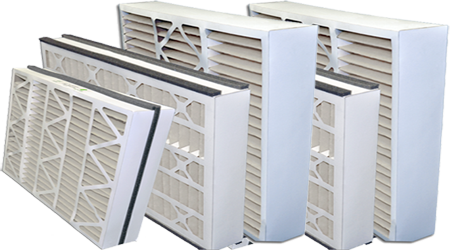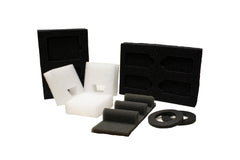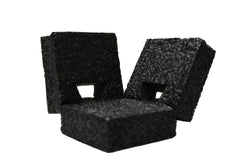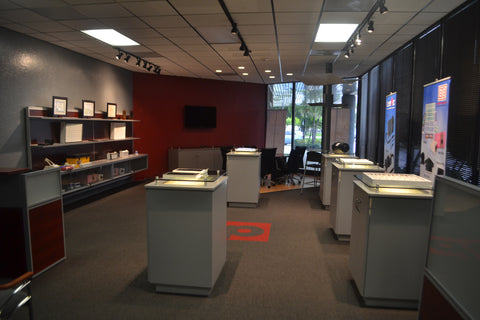MERV Rating Scale.
For those of you who are unfamiliar with the MERV rating scale, this will be very helpful to you. The scale begins at 1 and ends at 20. One is very weak, if a filter has been given a one, it is probably closer to being a fishing net than a filter. A rating at a 20 is a filter that catches practically everything. The higher the number on the scale, the better the efficiency. To expand a bit on this, filters wit ha MERV rating of 1 are typically found in window A/C units and can trap particles like carpet fibers. A MERV rating of 20 would be found in a clean room and can trap particles that exist within airborne viruses.
Why Pleated?
Pleated filters have a longer life span/expectancy and are very durable. Pleated has a high dust capacity while also maintaining a long life. Pleated is also very effective towards those with asthma and allergies. One of the most efficient pleated filters is the permanently charged electrostatic. It is designed to physically capture unnecessary particles in the air. Particles that would almost always pass through even the other pleated filters are “magnetically” drawn to the filter. On MERV's rating chart, the standard pleated filters can be from a 5 to a 12, sometimes even higher.
Why Polyester Panel Filter?
One of the most obvious answers to that question above is MONEY! We all want to save money. The fiberglass panels are definitely cheaper than the pleated panel. Fiberglass filters are also very good protectors to HVAC equipment from particles that can damage them. If you change out the filters on your furnace quite frequently, a panel filter might work for you.
Why Not Pleated?
Pleated filters can be more expensive and that fact alone is a determining factor to many. Pleated filters are still disposable and do need to be changed. Pleated filters may be made with needlefelt media. While this media provides us with good mechanical efficiency for capturing particles, it is often subject to high resistance to airflow, increasing the operation's energy costs.
On the MERV scale, panel filters can be from a 1-4. These filters are not as durable as others and do require changing more frequently, which in the long run could be costly. They are often referred to as “throw-away” filters. Panel filters have a low filtration efficiency. More than 80 percent of particles (3-10 microns) and virtually all of the smaller micron particles can pass through the filter and not be captured.
Burnett Pleated Filters
Our extended surface pleated filters are designed for use in all types of residential,
indoor air quality is desired. These filters offer higher efficiency and longer service life
as compared to fiberglass filters or permanent filters.
HVAC applications
Ideal for odor absorption and dust control
Rigid construction, extended surface and long service life are features and benefits that make pleated filters an excellent option
They are custom made, and available in a wide range of standard and special sizes in depths of 1", 2", and 4". White color pleated media is bonded to expanded metal which is coated with a rust inhibitor. The inner surface of the frame is coated with adhesive to prevent air bypass. The frames are made with a moisture resistant beverage board. The pleated shape is designed to hold more dirt. Our pleats are consistently spaced, and have a consistent height, all things needed for an efficient filter design. Our pleats will also hold together when wet, due to the adhesive used during assembly being highly water repellent, which saves you money.
Our polyester panel filters are used in numerous ways. Our panel filters are used for commercial, industrial, pharmaceutical and by many other professional industries.
To the left is a picture of our charcoal panel filter. Polyester media with activated carbon added, it is primarily used to reduce odors.
If you are in need of any pleated or panel filters, the link to our website is below. We manufacture custom made filters to meet your size and system requirements.
https://www.burnettprocessinc.com/collections/all-productsReferences Used:
https://keepingyoucool.wordpress.com/2012/09/26/pleated-vs-fiberglass-filters/]]>
 A well-maintained air filtration system is crucial for all types of medical facilities. Problematic scenarios will occur if there are mechanical failures and/or disruptions. A medical facility's maintenance priority must be the ventilation systems. Due to a hospital's nature of contagions and germs, ventilation systems need to protect patients, doctors, nurses, and visitors from contracting nosocomial (contracted as a result of being hospitalized).
A well-maintained air filtration system is crucial for all types of medical facilities. Problematic scenarios will occur if there are mechanical failures and/or disruptions. A medical facility's maintenance priority must be the ventilation systems. Due to a hospital's nature of contagions and germs, ventilation systems need to protect patients, doctors, nurses, and visitors from contracting nosocomial (contracted as a result of being hospitalized).



 Which System Is Right For A Hospital?
Which System Is Right For A Hospital?






 Why Florida? Florida was selected because of its proximity
to neighboring countries. Burnett is currently distributing product all around
the globe from Canada to Mexico to China. Florida has one of the highest
numbers of hospitals per capita in the nation. The hospital market has embraced
the world of technology, but how good are they at filtering the air you breathe
while you’re there? Burnett Process, Inc. is looking for opportunities to
explore the possibilities of creating a safer environment and we welcome
opportunities to create custom filters for new technology. We understand that
in the healthcare industry, your life is at stake, and hospitals have to deal
with the best options available. We want to be one of those “best” options!
Florida has a very diverse business base –
Why Florida? Florida was selected because of its proximity
to neighboring countries. Burnett is currently distributing product all around
the globe from Canada to Mexico to China. Florida has one of the highest
numbers of hospitals per capita in the nation. The hospital market has embraced
the world of technology, but how good are they at filtering the air you breathe
while you’re there? Burnett Process, Inc. is looking for opportunities to
explore the possibilities of creating a safer environment and we welcome
opportunities to create custom filters for new technology. We understand that
in the healthcare industry, your life is at stake, and hospitals have to deal
with the best options available. We want to be one of those “best” options!
Florida has a very diverse business base –